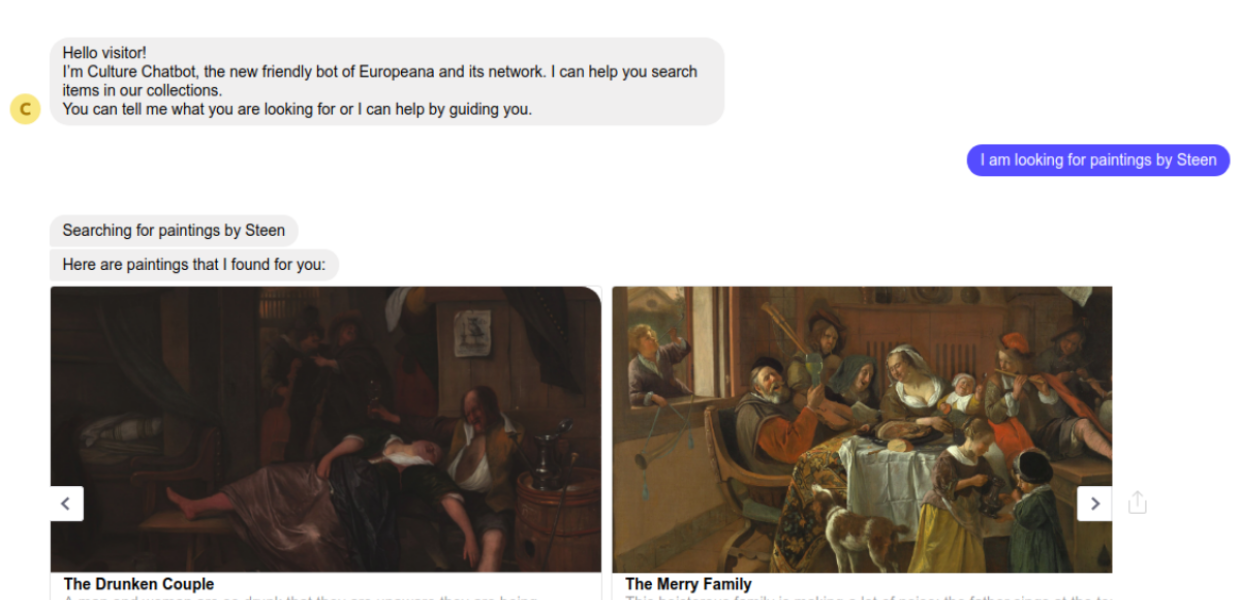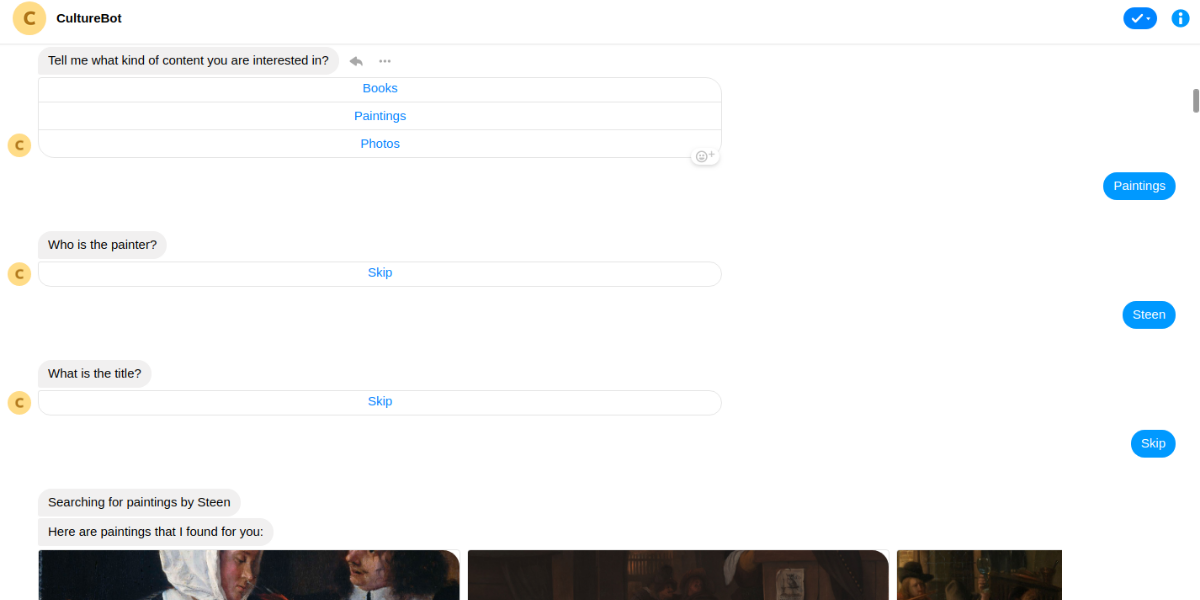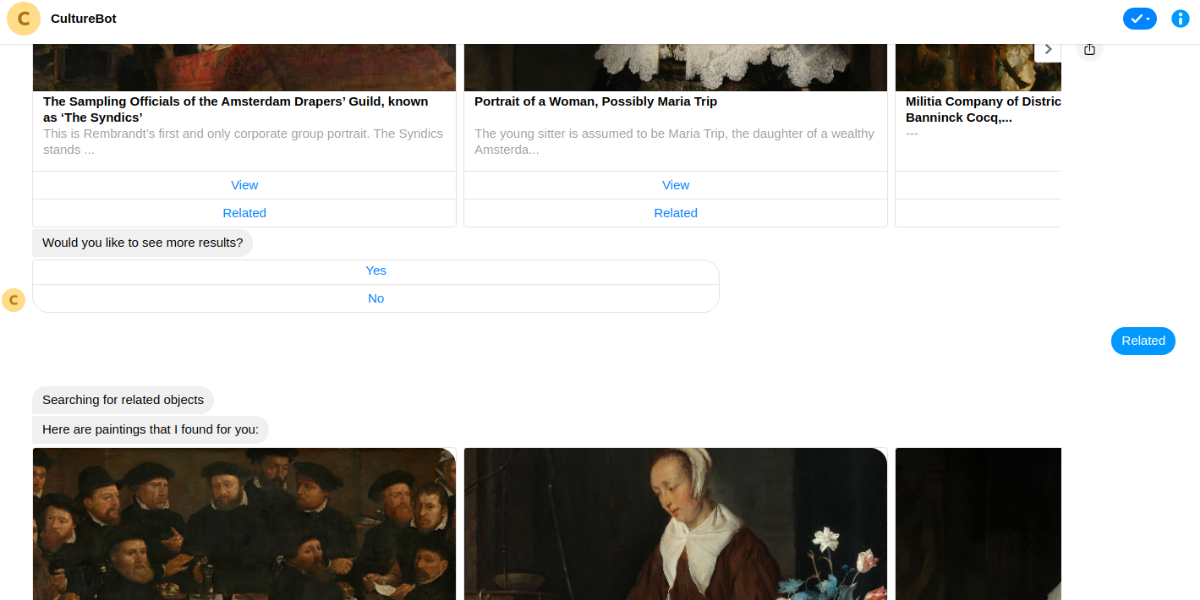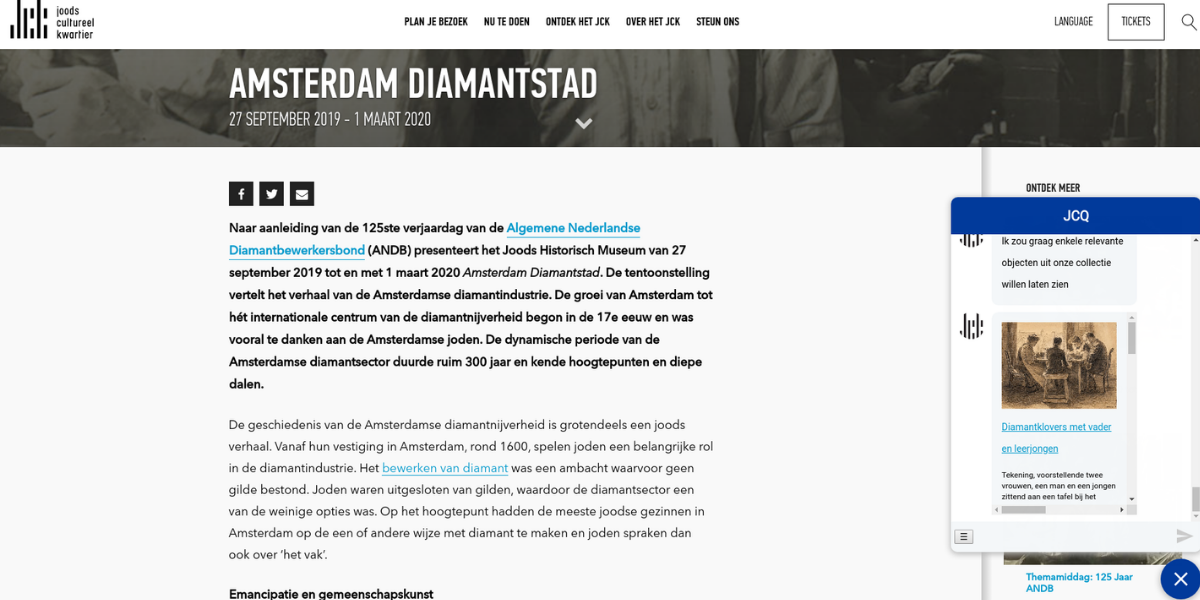The Culture Chatbot - engaging visitors with your collections
How can cultural heritage institutions use chatbots to engage visitors, help them find content and answer common questions? The Culture Chatbot project has been exploring these questions, and in this post Pavel Kats from the Jewish Heritage Network, the organisation behind the project, explains the work they have done so far and how you can benefit from their expertise.
.png)
- Title:
- The Culture Chatbot on the CulturaItalia website
- Creator:
- Culture Chatbot
- Date:
- 2019
- Institution:
- Culture Chatbot
- Copyright:
- CC BY-SA






